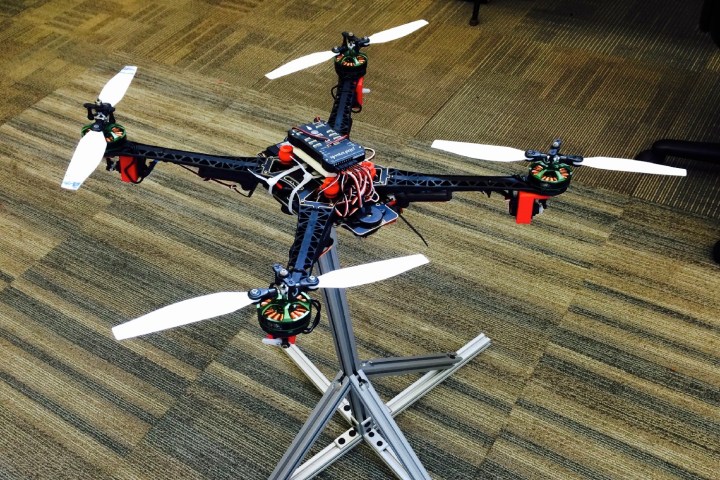
An alternative solution involves so-called “drop towers,” although these carry a large upfront cost to construct the necessary infrastructure.
A new piece of research, however, may offer a third Earth-bound option in the form of a proof-of-concept quadcopter that could help investigations into weightless flight.
No, it’s not designed to let humans test out zero G, but it could be vital to helping answer some of the other questions researchers are trying to answer about microgravity conditions — including issues related to materials science, fluid physics, combustion and more. Altogether, attempts to answer these questions cost global space agencies around $100 million each year.
The work of investigators at the Georgia Institute of Technology in Atlanta, the drone described has the stated goal of allowing for up to five seconds of zero G at a time, with a system that costs less than $25,000. Unlike a drop tower, researchers found that flying their quadcopter up to a great height and then cutting its motor doesn’t generate the right conditions because of air resistance.
Instead, they’ve come up with a special variable pitch rotor design for the quadcopter which they think will allow them to carry out their studies. They have also developed software that lets users design a range of zero G trajectories for carrying out different experiments. Details are described in a newly published paper entitled, “On the Design and Optimization of an Autonomous Microgravity Enabling Aerial Robot.”
At present, the researchers haven’t actually been able to carry out any test flights, although they hope to do so by the end of 2016. But current regulations do mean that they can’t carry out flights above 400 feet up, or carry more than 25 kilograms.
Regardless, this work still opens up a plethora of possibilities for research — and is bound to be met with favorable responses from space agencies, provided it all works as planned.
Editors' Recommendations
- 5G apocalypse is here as major airlines suspend U.S. flights
- Redmi India’s rebranded Note 11T 5G could be its last smartphone of 2021
- Parrot’s 4G-connected Anafi Ai drone is the Google Maps car of the skies
- Samsung’s cheap and colorful Galaxy A52, A52 5G, and A72 phones are here
- Yet another study shows 5G can be disappointing, but changes could be coming



